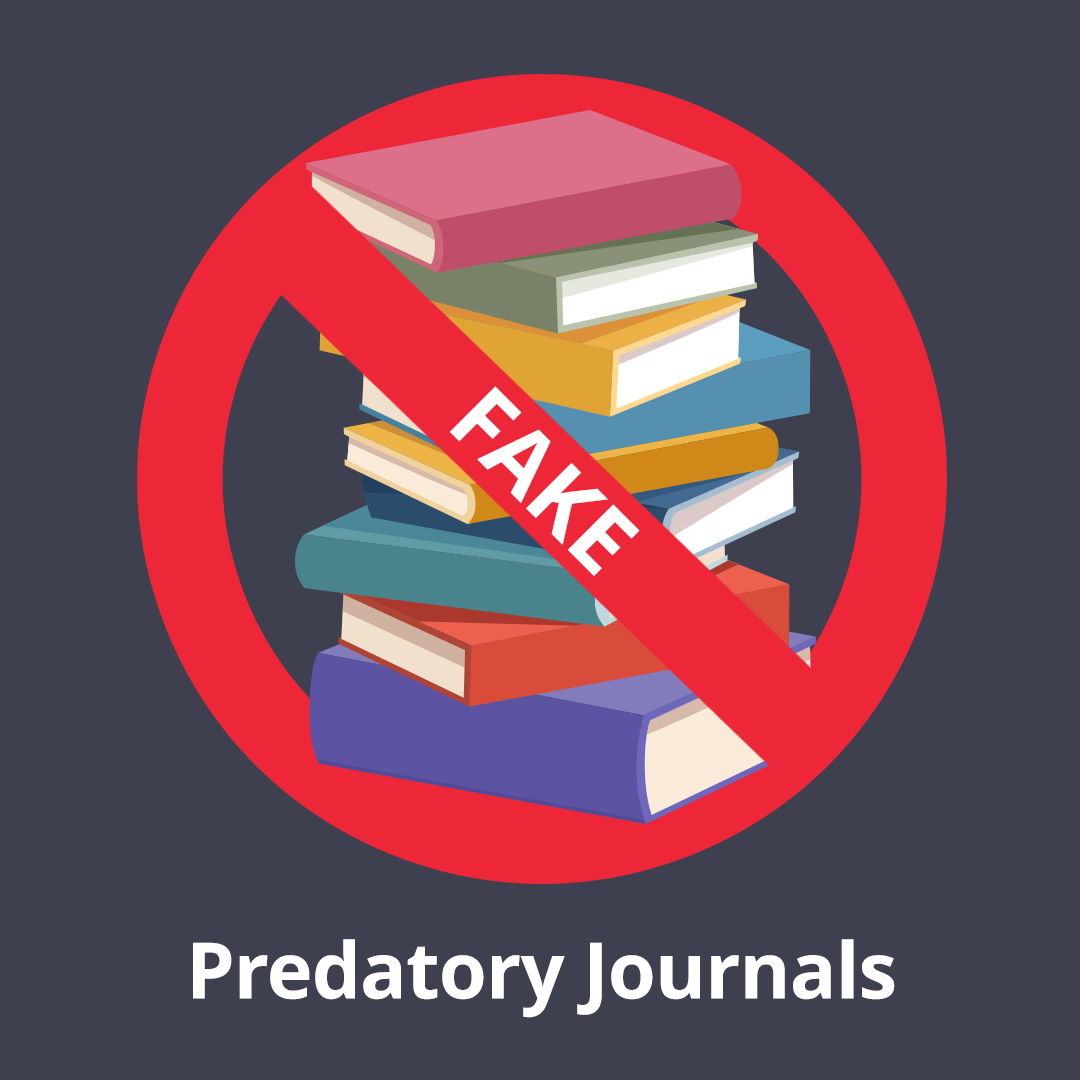How To Detect Fake Open Access Journals
Predatory publishers who seek to exploit the open access model for financial gain without providing genuine scholarly value. To protect your research and reputation, it's crucial to know how to detect fake open access journals. In this guide, we will walk you through the process step by step.
Author:Daniel JamesReviewer:Anderson PattersonSep 06, 20237.3K Shares252.8K Views

In the world of academic research, open access journals have gained immense popularity for their accessibility and wide dissemination of knowledge. However, this popularity has also attracted predatory publishers who seek to exploit the open access model for financial gain without providing genuine scholarly value. To protect your research and reputation, it's crucial to know how to detect fake open access journals. In this guide, we will walk you through the process step by step.
Understanding The Problem
In the fast-paced world of academic research, it's crucial to navigate the terrain of open access journalswith caution. While the open access model aims to democratize knowledge and foster the free exchange of ideas, it has also given rise to a growing problem - fake open access journals, commonly referred to as predatory journals.
What Are Fake Open Access Journals?
Fake open access journals, often known as predatory journals, are publications that cunningly masquerade as legitimate scholarly outlets. However, beneath their facade lies a stark reality: they frequently lack the fundamental hallmarks of a reputable journal. Here's what characterizes these deceptive publications:
1. Lack of Rigorous Peer-Review:Authentic scholarly journals employ a robust peer-review process to ensure the quality and integrity of the research they publish. In contrast, predatory journals often engage in superficial or even non-existent peer review, allowing subpar or even flawed research to be disseminated.
2. Absence of Editorial Standards:Reputable journals maintain high editorial standards, adhering to strict ethical guidelines and best practices. Predatory journals, on the other hand, are often characterized by lax editorial oversight, contributing to the publication of questionable content.
3. Profit-Driven Motive:The primary motive behind fake open access journals is financial gain, not the advancement of knowledge. They prey on researchers' desire to publish their work and often charge exorbitant publication fees without offering the necessary editorial support or rigorous peer review.
4. Lack of Academic Credibility:Predatory journals frequently lack the recognition and credibility that reputable journals enjoy within the academic community. Publishing in such journals can cast doubt on the legitimacy of the research and the researcher's judgment.
Typical Practices Of Predatory Journals
In the fast-paced and highly competitive world of academic publishing, researchers often find themselves inundated with various offers and invitations, particularly in their email inboxes. Among these are an abundance of spam calls for papers, often originating from new journals that assert themselves as credible and peer-reviewed outlets. However, it's crucial to exercise caution when encountering such solicitations, as many of them are affiliated with what are commonly referred to as predatory journals.
The Deceptive Claims
Predatory journals employ a range of deceptive tactics to appear legitimate, aiming to lure unsuspecting researchers into submitting their work. Here are some of the typical practices employed by these journals:
1. False Peer Review Claims:To lend an air of legitimacy, predatory journals frequently claim to conduct peer reviews of submitted articles. However, these reviews are often cursory or nonexistent, and the editorial standards may be lax.
2. Inclusion in Databases:One of the most common misleading tactics is the assertion of inclusion in prestigious databases such as the ISI (Web of Science) and Scopus. These databases are well-regarded in the academic world, and predatory journals exploit this recognition to appear reputable.
3. Exorbitant Publication Fees:Predatory journalsoften charge substantial publication fees, typically starting at a minimum of $100. These fees are disproportionate to the quality of service provided, as genuine journals typically offer comprehensive peer review and editorial support for similar or lower costs.
4. Expedited Review Process:In an attempt to entice authors, predatory journals claim to have an exceptionally fast review process, sometimes guaranteeing publication within a maximum of two weeks. This rapid turnaround is often unrealistic and a red flag for discerning researchers.
The Consequences Of Publishing In Fake Journals
Loss Of Reputation
One of the gravest repercussions of associating your research with a predatory journal is the potential loss of reputation within the academic community. Your work may be viewed skeptically, and your credibility as a researcher could be seriously undermined. Colleagues, peers, and prospective employers may question the rigor and validity of your contributions.
Wasted Resources
Predatory publishers often lure unsuspecting researchers with promises of easy publication. However, these promises come at a hefty cost. Researchers are frequently charged substantial publication fees, sometimes with hidden charges for additional services. These fees are often incommensurate with the level of editorial support and peer review provided, resulting in wasted resources that could have been better invested elsewhere.
Limited Impact
The primary purpose of scholarly research is to contribute to the body of knowledge and have a meaningful impact on the field. Publishing in a fake open access journal significantly reduces the likelihood of your work reaching its intended audience. Researchers and scholars tend to avoid such journals, limiting the visibility and influence of your research.
Ethical Concerns
Beyond personal consequences, supporting predatory publishing practices raises ethical concerns. By engaging with fake open access journals, you inadvertently contribute to the perpetuation of unscrupulous practices in academia. This includes the exploitation of early-career researchers and the erosion of trust within the scholarly community.
To avoid falling victim to predatory journals and their detrimental consequences, it's essential to adopt a discerning approach when choosing a publication outlet for your research. For guidance on crafting a compelling research paper that will stand out in legitimate journals, be sure to check out this informative resource on how to write a hook for a research paper.
Simple Warning Signs To Identify Predatory Journals
In the world of academic publishing, the proliferation of predatory journals is a cause for concern, and researchers must remain vigilant to avoid falling victim to their deceptive practices. While these journals often rely on the eagerness of desperate researchers, there are some straightforward warning signs that can help you distinguish between reputable journals and questionable ones. Here are some key indicators to watch out for:
Lack Of Contact Information
No Physical Address:Legitimate journals typically provide a physical address for their editorial offices. If the journal lacks an address or only lists an email contact, it raises suspicions about its credibility. Journals that are genuinely invested in academic scholarship should have a physical presence.
Editorial Board Absence
Missing Editorial Board:Reputable journals rely on an editorial board of experts to oversee the quality of published articles. If you cannot find any evidence of an editorial board on the journal's website, it suggests a lack of genuine peer review and editorial oversight.
Unusual Association Claims
Inappropriate Affiliation Claims:Predatory journals sometimes display logos or images of well-known publishers or organizations on their websites. These associations are often fabricated and serve as an attempt to establish credibility. Be cautious if a journal claims partnerships that seem unlikely.
Dubious Editorial Board Members
Prominent Researchers on Board:While legitimate journals may have distinguished researchers on their editorial boards, be wary if an unknown journal boasts the participation of exceptionally prominent researchers who would likely have no reason to engage with such a publication. Predatory journals may falsely claim affiliations with respected academics to appear more credible.
Mention Of Fees After Acceptance
Absence of Article Processing Fees (APF):The absence of any mention of Article Processing Fees (APF) is a potential red flag. Some predatory journals may accept articles quickly and then present authors with unexpectedly high bills for publication, often after the work has been accepted.
Lack Of Peer Review Information
No Peer Review or Submission Guidelines:Reputable journals are transparent about their peer-review process and provide clear submission guidelines for authors. If a journal fails to mention its peer-review process or basic submission requirements, it suggests a lack of rigorous scholarly evaluation.
Analyzing Publication Fees - Avoiding The Predatory Trap
When it comes to identifying fake open access journals, a critical aspect to scrutinize is the publication fees. Predatory journals often exploit researchers' desires to publish their work by charging exorbitant fees while failing to provide the necessary editorial services. To navigate this treacherous terrain effectively, consider the following factors:
Exorbitant Fees
One of the most glaring warning signs of predatory journals is their propensity to charge exorbitant publication fees. These fees can sometimes soar to unreasonable levels, far surpassing what reputable journals charge for similar services. To determine the reasonability of these fees, it's prudent to:
Compare with Established Journals:Research and compare the publication fees of the journal in question with those of well-established open access journals in your field. If the fees are significantly higher without a corresponding increase in services, it should raise a red flag.
Hidden Charges
Predatory journals often employ deceptive tactics by concealing additional charges that can catch authors off guard. These hidden fees can include charges for various services, such as:
- Color Figures:Be cautious of journals that impose extra fees for color figures, as this is often considered standard in reputable publications.
- Page Charges:Some predatory journals may charge additional fees based on the number of pages in your article. Legitimate journals typically do not employ such practices.
- Additional Services:Watch out for hidden costs associated with supposed "extras" like expedited review or fast-track publication. Legitimate journals are transparent about any additional service charges.
Assessing The Journal's Reputation
To further ascertain the authenticity of an open access journal, it's crucial to evaluate its reputation and standing within the academic community. Here's how you can go about it:
Check Indexing And Impact Factor
- Database Indexing:Investigate whether the journal is indexed in reputable academic databases like PubMed, Scopus, or Web of Science. Being indexed in these databases is a mark of recognition within the scholarly community and indicates that the journal meets certain quality standards.
- Impact Factor Verification:If the journal claims to have a high impact factor, which is often a selling point for reputable publications, ensure that this claim can be verified through legitimate sources. Be wary of journals that make unsubstantiated impact factor claims.
Consult Academic Networks
Seek Peer Insights:Academic networks can be valuable sources of information. Reach out to colleagues, mentors, or participate in online academic communities and forums. Fellow researchers may have firsthand experiences or insights into the credibility of the journal based on their interactions.
Ensuring Content Integrity - A Critical Assessment
In the quest to detect fake open access journals, it's imperative to delve into the integrity of the content they host. Two key facets to scrutinize are plagiarism and the quality of published articles. These factors can serve as vital indicators of a journal's credibility and authenticity:
Use Plagiarism Detection Tools
Leverage Plagiarism Detection Software:Plagiarism detection tools are indispensable allies in the battle against predatory journals. These software solutions analyze the text of a journal's website or its published articles to identify instances of plagiarism. Legitimate journals prioritize originality and uphold rigorous ethical standards. If a journal's content is riddled with unoriginal material, it raises serious concerns about its authenticity.
Evaluate Article Quality
Review Published Articles:A close examination of articles previously published by the journal can offer valuable insights into its quality and adherence to academic standards. Consider the following aspects when evaluating the articles:
By employing plagiarism detection tools and critically assessing the quality of the content within a journal, you can make informed judgments about its legitimacy. Remember that high-quality journals prioritize originality, research rigor, and adherence to academic standards. If the journal's content fails to meet these criteria, it should raise significant doubts about its authenticity, warranting a cautious approach to engagement.
People Also Ask
How Can You Identify A Fake Journal?
Identifying a fake journal, often referred to as a predatory journal, involves a thorough assessment of various aspects. Here are key steps to help you identify a fake journal:
- Check Contact Information:Legitimate journals provide physical addresses and clear contact information for their editorial offices. If the journal lacks these details or only lists an email address, it may be a red flag.
- Evaluate the Editorial Board:Reputable journals have an established editorial board comprising experts in the field. If you cannot find evidence of an editorial board or if it contains suspiciously prominent researchers who seem unlikely to be affiliated with the journal, exercise caution.
- Investigate Publication Fees:Predatory journals often charge exorbitant publication fees without providing commensurate editorial services. Compare the fees with those of established open access journals to gauge reasonability.
- Look for Hidden Charges:Be aware of hidden fees, such as those for color figures, page charges, or expedited publication services. Legitimate journals are transparent about their costs.
- Assess Journal Reputation:Check whether the journal is indexed in reputable databases like PubMed, Scopus, or Web of Science. Verify claimed high impact factors through legitimate sources.
- Consult Academic Networks:Seek advice from colleagues, mentors, or online academic communities. Insights from experienced researchers can help you determine a journal's credibility based on their experiences.
How Do I Know If My Open Access Publication Is Credible?
To ensure the credibility of your open access publication, follow these steps:
- Journal Selection:Choose a journal with a reputable track record, well-defined editorial processes, and a transparent peer-review system. Look for indexing in respected databases and a history of publishing high-quality research.
- Editorial Board:Verify the composition of the journal's editorial board, ensuring it includes experts in your field. A credible journal will have a well-qualified editorial team.
- Publication Fees:Ensure that the publication fees are reasonable and in line with industry standards. Transparent journals provide a clear breakdown of these costs.
- Peer Review:Reputable open access journals maintain rigorous peer-review processes. Confirm that the journal follows established peer-review procedures, which include the evaluation of content by experts in the field.
- Transparency:Check for clear submission guidelines, ethical policies, and copyright information on the journal's website. Transparency is a hallmark of credible publications.
- Indexing and Impact Factor:Look for the journal's inclusion in respected indexing services and verify any claimed impact factor through legitimate sources.
How To Identify A Predatory Journal Pretend To Be Legitimate?
Predatory journals often masquerade as legitimate publications. To identify such journals, watch out for these telltale signs:
- Lack of Transparency:Predatory journals may hide essential information, such as editorial board details, publication fees, or peer-review processes. Genuine journals are transparent about these aspects.
- Overpromising:Be cautious of journals that promise rapid publication, guaranteed acceptance, or extraordinarily short peer-review periods. These claims are often unrealistic in legitimate publishing.
- Unusual Affiliations:Be wary of journals claiming affiliations with renowned publishers, organizations, or institutions without substantial evidence. Predatory journals may use these affiliations deceptively.
- Plagiarism and Low-Quality Content:Examine the quality of previously published articles. Predatory journals often host poorly written, low-quality, or plagiarized content.
- Suspicious Email Solicitations:Be cautious of unsolicited emails inviting you to submit articles. Many predatory journals rely on spam emails to attract authors.
- Excessive Publication Fees:Predatory journals may charge excessively high publication fees without providing appropriate editorial services.
- Absence from Reputable Databases:Verify the journal's indexing status in recognized databases like PubMed, Scopus, or Web of Science. Predatory journals may falsely claim inclusion.
Conclusion
Detecting fake open access journals is crucial for safeguarding your research and maintaining your academic integrity. By following the steps outlined in this guide, you can make informed decisions when choosing a journal for your work. Always prioritize reputable journals with transparent processes, established reputations, and a commitment to advancing scholarly knowledge. Your research deserves to be published in a journal that values academic excellence and integrity.

Daniel James
Author
Daniel James is a distinguished gerontologist, author, and professional coach known for his expertise in health and aging.
With degrees from Georgia Tech and UCLA, including a diploma in gerontology from the University of Boston, Daniel brings over 15 years of experience to his work.
His credentials also include a Professional Coaching Certification, enhancing his credibility in personal development and well-being.
In his free time, Daniel is an avid runner and tennis player, passionate about fitness, wellness, and staying active.
His commitment to improving lives through health education and coaching reflects his passion and dedication in both professional and personal endeavors.

Anderson Patterson
Reviewer
Anderson Patterson, a tech enthusiast with a degree in Computer Science from Stanford University, has over 5 years of experience in this industry.
Anderson's articles are known for their informative style, providing insights into the latest tech trends, scientific discoveries, and entertainment news.
Anderson Patterson's hobbies include exploring Crypto, photography, hiking, and reading.
Anderson Patterson's hobbies include exploring Crypto, photography, hiking, and reading.
In the Crypto niche, Anderson actively researches and analyzes cryptocurrency trends, writes informative articles about blockchain technology, and engages with different communities to stay updated on the latest developments and opportunities.
Latest Articles
Popular Articles



